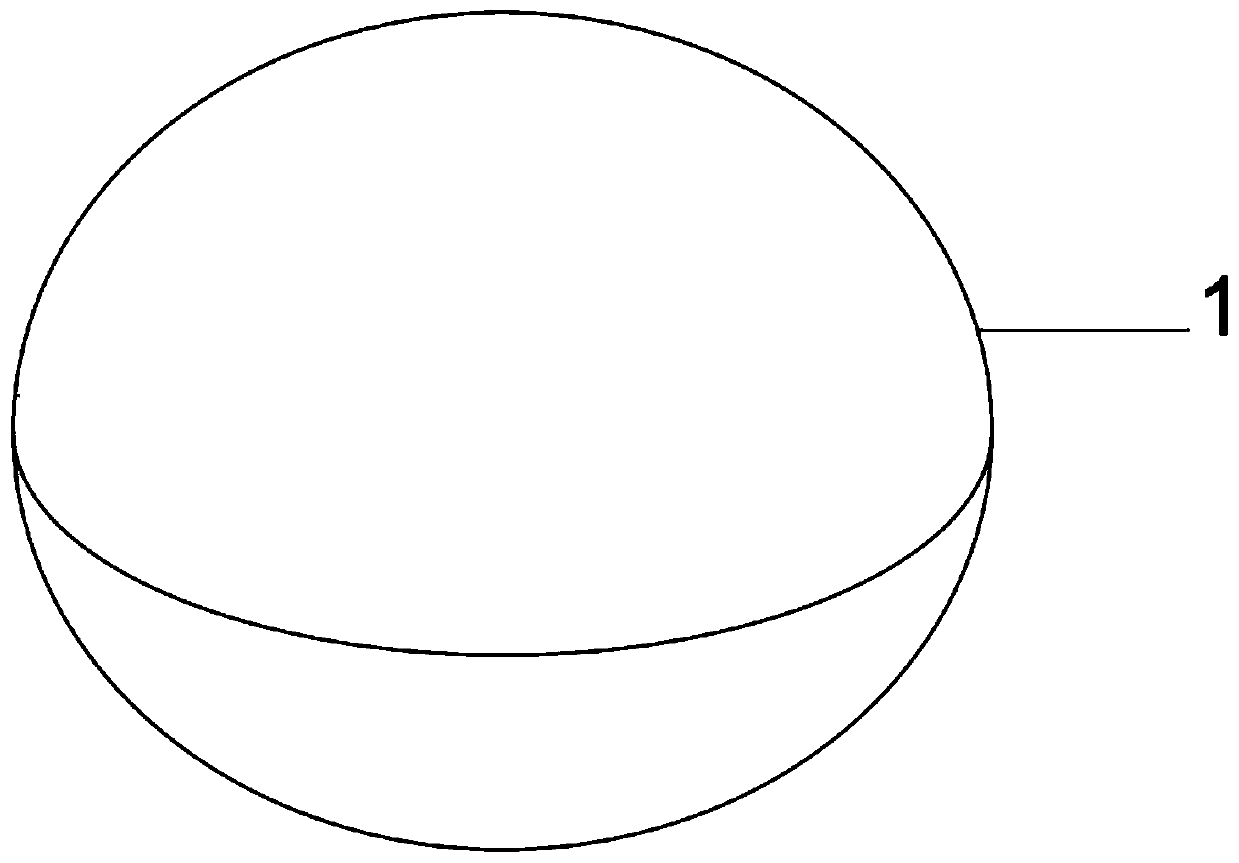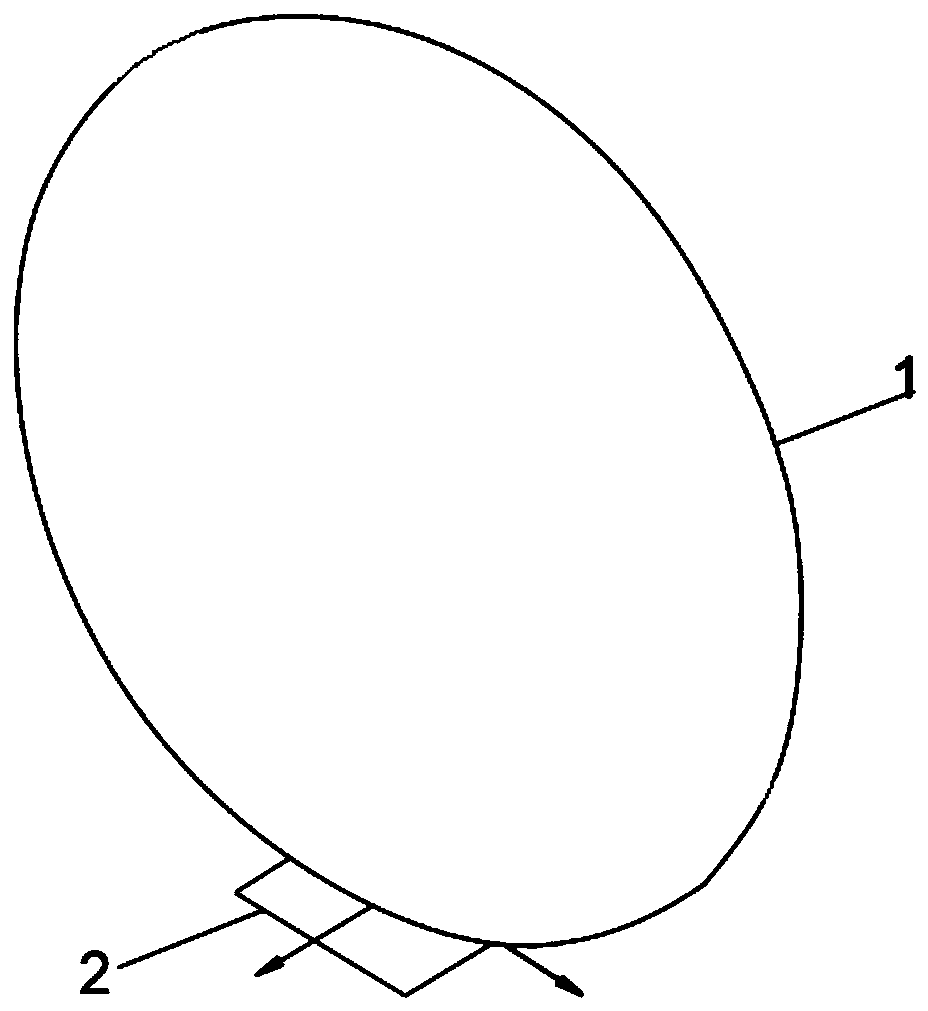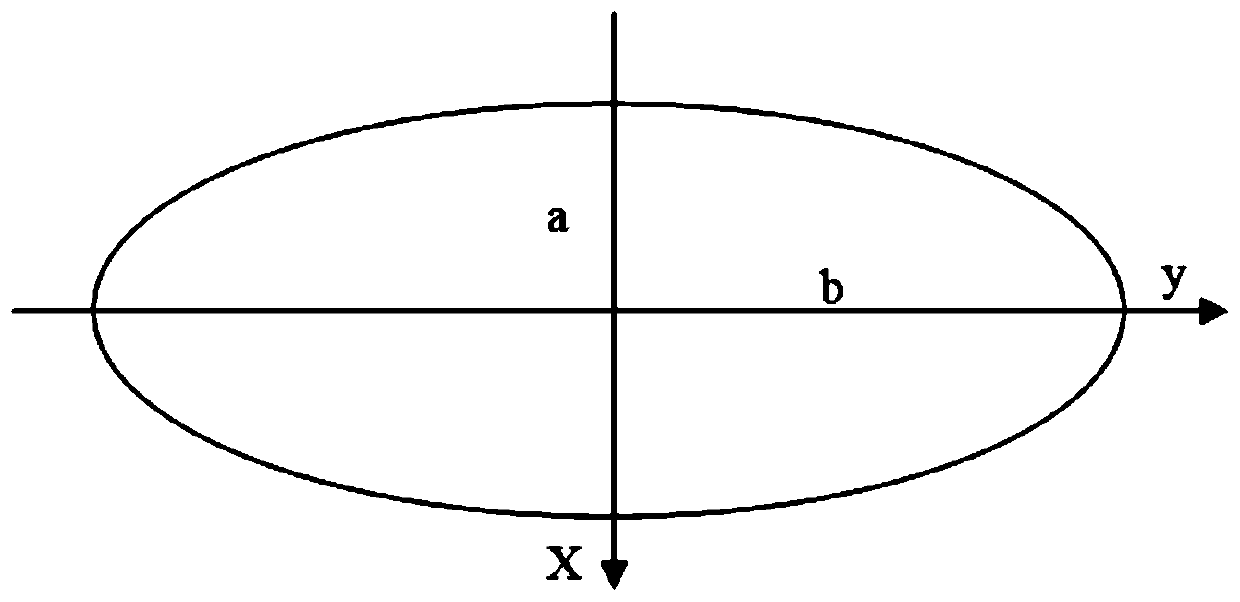Deformable luneberg lens and antenna
A Luneberg lens and lens technology, which is applied in antennas, electrical components, etc., can solve the problem that spherical Luneberg lenses cannot meet the application scenarios, and achieve the effects of beam broadening, volume reduction, and increased spatial coverage
- Summary
- Abstract
- Description
- Claims
- Application Information
AI Technical Summary
Problems solved by technology
Method used
Image
Examples
Embodiment 1
[0033] Such as figure 1 , figure 1 It is a three-dimensional schematic diagram of a lens body in an embodiment of the present invention; a deformed Luneberg lens includes a lens body 1, and the shape of the lens body 1 is an ellipsoid.
[0034] Further, in this embodiment, the vertical downward projection of the lens body 1 is elliptical.
[0035] Further, in this embodiment, in the ellipse, the length of the semi-minor axis of the ellipse is identified by the parameter a, the length of the semi-major axis of the ellipse is identified by the parameter b, and the axis ratio of the ellipse is identified by the parameter k. It is easy to know that k=b / a.
[0036] Specifically, in this embodiment, the semi-minor axis a of the ellipse can be determined according to the actual situation. Preferably, the semi-minor axis a=40mm, and the ellipse axis ratio parameter k can be selected according to the actual situation, such as the ratio of the ellipse axis to The parameter k takes a ...
Embodiment 2
[0039] Such as figure 1 , figure 1 It is a three-dimensional schematic diagram of a lens body in an embodiment of the present invention; a deformed Luneberg lens includes a lens body 1, and the shape of the lens body 1 is an ellipsoid.
[0040] Further, in this embodiment, the vertical downward projection of the lens body 1 is elliptical.
[0041] Further, in this embodiment, in the ellipse, the length of the semi-minor axis of the ellipse is identified by the parameter a, the length of the semi-major axis of the ellipse is identified by the parameter b, and the axis ratio of the ellipse is identified by the parameter k. It is easy to know that k=b / a.
[0042] Specifically, in this embodiment, the semi-minor axis a of the ellipse can be determined according to the actual situation. Preferably, the semi-minor axis a=40mm, and the ellipse axis ratio parameter k can be selected according to the actual situation, such as the ratio of the ellipse axis to The parameter k takes a ...
Embodiment 3
[0044] Such as figure 1 , figure 1 It is a three-dimensional schematic diagram of a lens body in an embodiment of the present invention; a deformed Luneberg lens includes a lens body 1, and the shape of the lens body 1 is an ellipsoid.
[0045] Further, in this embodiment, the vertical downward projection of the lens body 1 is elliptical.
[0046] Further, in this embodiment, in the ellipse, the length of the semi-minor axis of the ellipse is identified by the parameter a, the length of the semi-major axis of the ellipse is identified by the parameter b, and the axis ratio of the ellipse is identified by the parameter k. It is easy to know that k=b / a.
[0047] Specifically, in this embodiment, the semi-minor axis a of the ellipse can be determined according to the actual situation. Preferably, the semi-minor axis a=40mm, and the ellipse axis ratio parameter k can be selected according to the actual situation, such as the ratio of the ellipse axis to The parameter k takes a ...
PUM
| Property | Measurement | Unit |
|---|---|---|
| Beam width | aaaaa | aaaaa |
Abstract
Description
Claims
Application Information
 Login to View More
Login to View More - R&D Engineer
- R&D Manager
- IP Professional
- Industry Leading Data Capabilities
- Powerful AI technology
- Patent DNA Extraction
Browse by: Latest US Patents, China's latest patents, Technical Efficacy Thesaurus, Application Domain, Technology Topic, Popular Technical Reports.
© 2024 PatSnap. All rights reserved.Legal|Privacy policy|Modern Slavery Act Transparency Statement|Sitemap|About US| Contact US: help@patsnap.com










